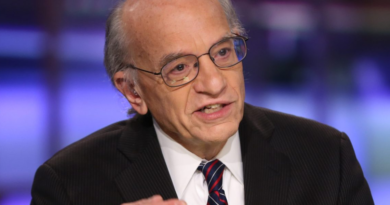Earth’s ‘second lung’ is under threat. Losing the Congo Basin forests would set the fight against climate change back 20 years
It is the year 2050. The Blue Nile has almost run dry, starved of the rains at its source that were historically sustained by atmospheric rivers flowing from the Congo Basin rainforests. Nearly half a billion people across the Sahel, the Horn of Africa, and north of the Sahara are now on the move, fleeing the devastating impact of droughts, famine, and water wars, the result of allowing unmitigated climate change to get out of control decades earlier. Despite the evidence of their critical ecological importance, we stood by while the Congo Basin, the heart of Africa, the Earth’s second great rainforest, was decimated by human activity, deforestation, and climate change. Losing the earth’s second lung proved fatal for many ecosystems, human populations, and even entire nations—shattering the security and stability of the continent and indeed the whole planet.
This may sound too alarmist or far-fetched to be true—but science suggests that we are hurtling toward this alternate future because of our inactivity and negligence in the face of climate change.
We must urgently develop a generation of African scientists able to study, document, monitor, and explain the complex ecological processes that have structured the vital Congo Basin ecosystem, as well as the threats posed by modern human activities to its very existence.
Twenty-five years ago, Brazil launched the Large-Scale Biosphere-Atmosphere experiment in Amazonia (LBA). The program was led by Brazilians and supported by the international community to the tune of $100 million. Involving 1,700 participants, 990 of whom were Brazilians, it revolutionized our understanding of the Amazon rainforest and its role in the Earth system. One of its greatest legacies was the creation of a cadre of Brazilian scientists. As a result, Brazil is now widely acknowledged as the world’s leading nation in tropical forest monitoring and is at the forefront of rainforest science. The Science Panel of the Amazon grew out of this initiative and includes 280 scientists, who published the landmark 2021 Amazon Assessment Report in the lead up to COP 26 in Glasgow.
Whilst the Amazon has attracted huge attention from international donors, the Congo Basin, Earth’s second great rainforest, has been largely neglected. Only now is a cadre of indigenous scientists emerging, despite the context of insufficient attention and funding from international donors.
The funds that do exist for the conservation and sustainable management of the Congo Basin, such as the Central African Forest Initiative (CAFI) or the Congo Basin Forest Partnership, are insufficient to support the science that is critical to our understanding and ability to manage the ecosystem. Very few long-term data bases and research stations exist—and those that do struggle permanently to raise even relatively modest funding on an annual basis.
Thanks to AFRITRON, a network of permanent botanical plots initiated by Professor Simon Lewis at the University of Leeds in the U.K., and a few key long-term sites such as Lopé, Epulu, Kibale, and Budongo, where stubborn researchers have plugged away over decades despite the general lack of interest, we do have some indications of the importance of the Congo Basin as a carbon sink. Indeed, while it is only one-third the area of the Amazon, the Congo Basin contains roughly 40% the carbon stock and its forests are proving more resilient to climate change than the southern Amazon. Today, they represent a much larger carbon sink, despite their smaller size.
Incomplete, fragmented, or preliminary studies suggest that the ecosystem services provided by the Congo basin forests, such as the cooling effect of transpiration from their leaves and the atmospheric rivers that flow to the Ethiopian Highlands and the Sahel, generating the rainfall that fills the Blue Nile and irrigates Egypt, are critical to African and global stability.
Make no mistake: If we lose the Congo Basin forests, the global fight against climate change will be set back by 15 to 20 years. We would also lose the water, the lifeblood of Africa that is pumped out of its green heart—and the consequences will be counted in hundreds of millions of climate refugees in the coming decades.
Put simply, Africa is not viable without the Congo Basin forests—or at least that is the indication of the scant evidence that exists.
In my new role as the United Nations (UN) High Level Special Envoy of the Science Initiative for the Congo Basin (SPCB), it is my duty to sound the alarm. We must build more bridges between scientists, donors, and policy makers. The SPCB, along with our sister initiative, the Science Initiative for the Congo Basin, need your support and investment. If our world is to remain ecologically stable, we have to better understand and preserve this critical ecosystem, which is home to 80 million people and supports life for a further 300 million rural Africans in surrounding regions.
The depth of understanding we need will not come from developed nation researchers studying satellite images taken from afar. We need Congo Basin scientists, on the ground, in the forest, learning from indigenous people and piecing together the complex interactions between plants, animals, people, climate, hydrology, and geology.
We are inspired by and looking to learn from and develop strong links with the Science Panel for the Amazon. By the time the SCPB touches down at COP30, the rainforest COP, which will be held in Belem in 2025, our first assessment report will be ready.
With the world’s lungs under existential threat, we must mobilize to create lasting change.
More must-read commentary published by Fortune:
The opinions expressed in Fortune.com commentary pieces are solely the views of their authors and do not necessarily reflect the opinions and beliefs of Fortune.



